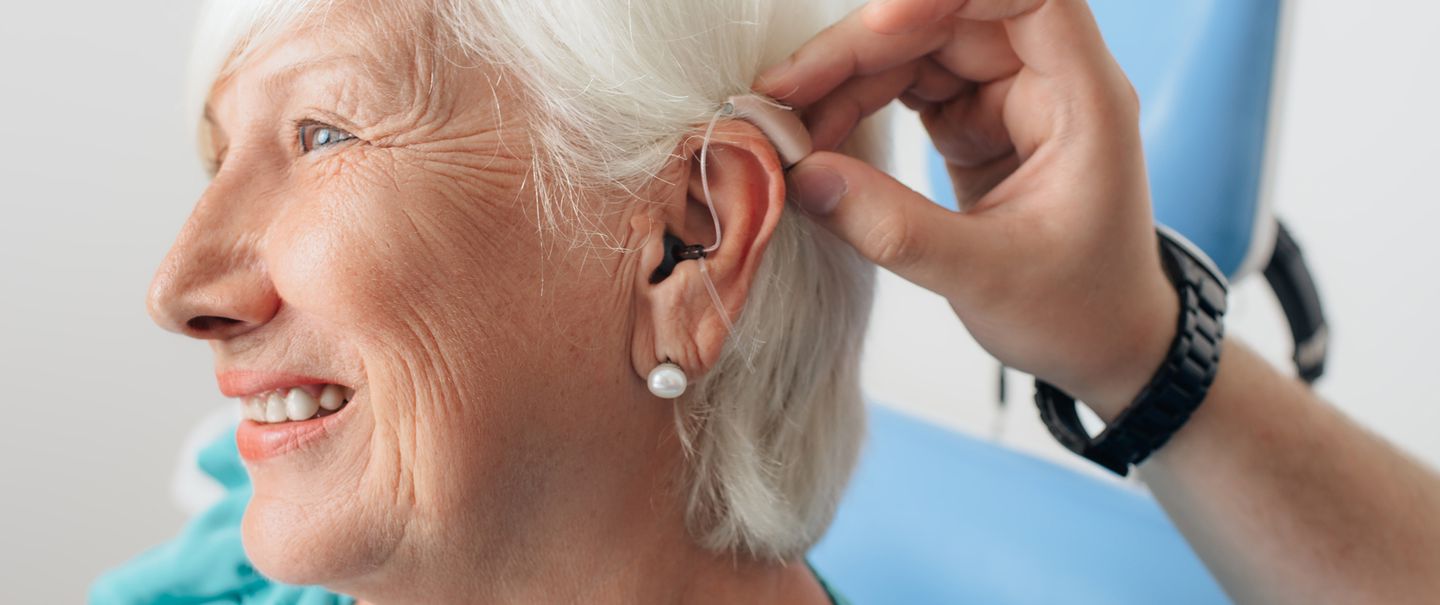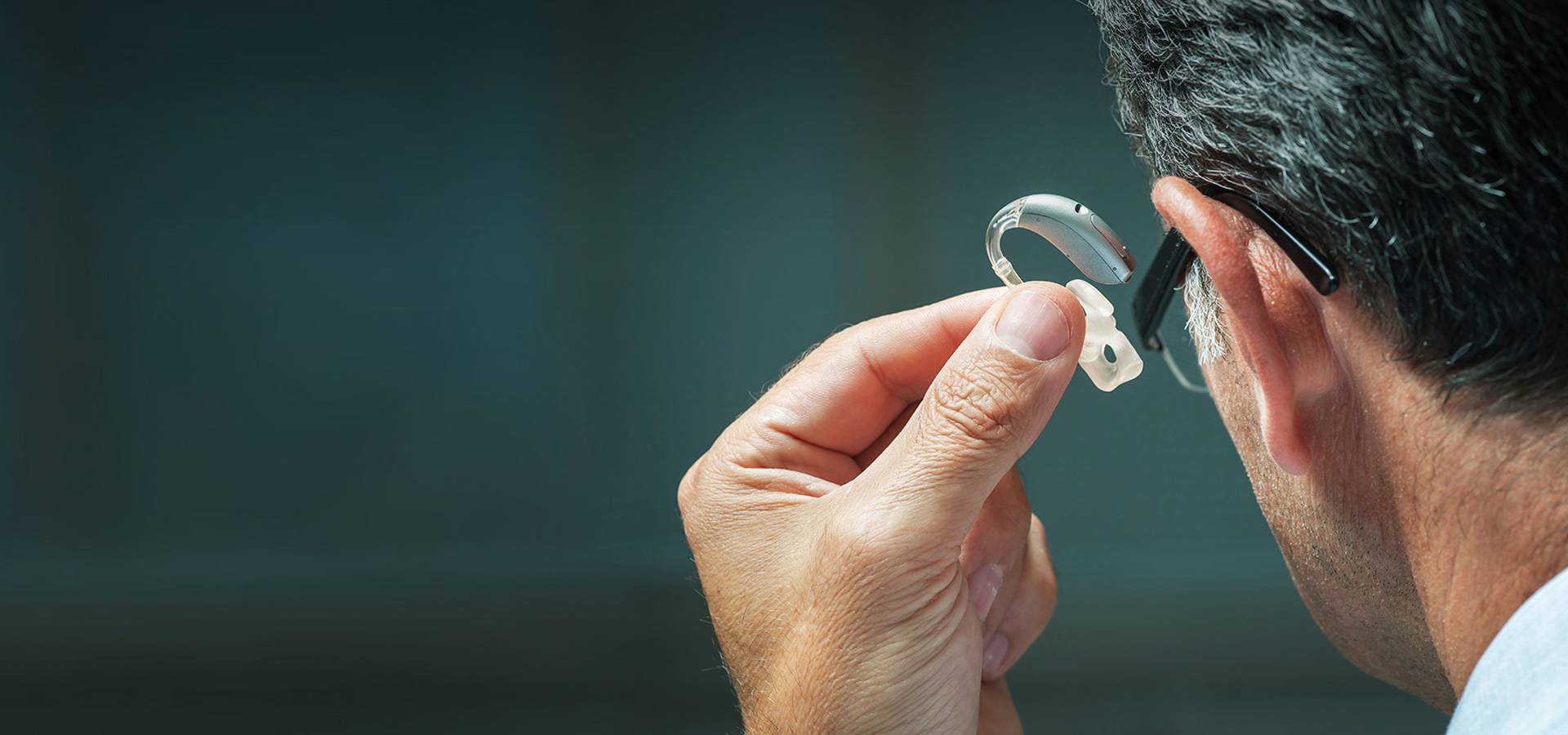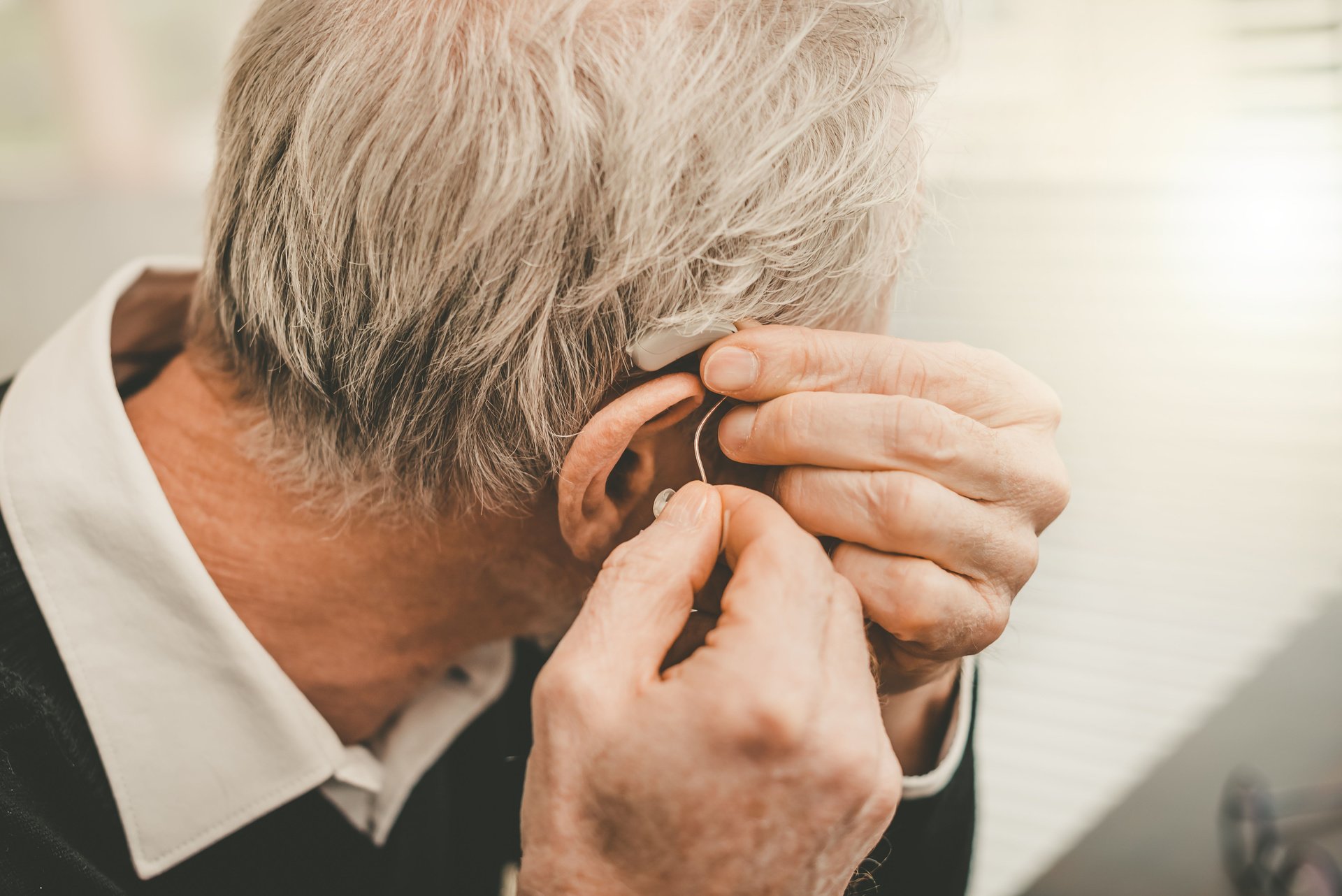How To Clean Your Hearing Aid Domes
Domes are an alternative for ear moulds, and can be used with slim tube behind-the-ear or receiver-in-canal styled hearing aids.
The biggest difference between domes and ear moulds is that unlike ear moulds that require an impression and are rarely replaced, domes come in a variety of pre-made shapes and sizes, and require replacement.
What does this mean in terms of cleaning hearing aid domes? You do not have to! When your hearing aid domes requires cleaning, you simply need to remove the dirty dome, and replace it with a new one. How often you need to do it will depend on what your audiologist tells you, but it may be at least once a month.
This can be done by pulling off your dome from the tubing. However, be careful to not pull on the tubing of the hearing aid when removing your dome. To put on a new one, click it back onto the tubing.
Regardless of how often you do the cleaning yourself, it is important to make appointments with your audiologist for checks and deep cleaning in places that you have missed or have been to unsure to do yourself, such as the wax filter. Do not feel pressured to clean parts of the hearing aid that you are afraid of damaging, it is best to visit your audiologist than to damage your hearing aid and pay for repairs.
Contact us on 1300 848 335 today for a free, no obligation consultation with one of our qualified consultants.
You’ve Made Major Lifestyle Changes
Sometimes, a lifestyle change is an excellent reason to get new hearing aids. You might realize that the technology level is no longer meeting your needs or is outdated. For example, you got a new phone and watch a lot of videos on it, but can’t connect the sound directly to your hearing aids. Or, perhaps you’re getting out and hiking a lot more than you used to, so you need hearing aids that can stand up to more rugged environments and are good at blocking wind noise. Or, on the other hand, if you don’t get out as much as you used to, a more basic model may work just fine for your needs.
What Happens During My Visit With The Hearing Specialist
At your hearing care visit, the audiologist will not only clean your hearing aids. They will also look to see if there are any problems with your hearing aid, like static noise or any broken parts. If this is an issue, they will help you to replace the hearing aid. That way, you won’t have to deal with any hearing loss in the future. If you do replace your hearing aids, they can help show you the latest in hearing technology. You may find that the new aids work much better than your older version.
You May Like: Can Developmental Venous Anomaly Cause Tinnitus
Hearing Aid Cleaning Kit
Cleaning kits contain the basic tools needed for cleaning your devicewax brush/pick, wire loop, cloth, vent cleaner, and carrying case to protect each item.
Some cleaning kits will include a screwdriver and a battery magnet to open the battery compartment and safely remove your hearing aid batteries.
Cleaning kits can be purchased online, at your local pharmacy or drugstore, at superstores like Target or Walmart, or visit any hearing aid center.
What Tools Do You Need

In order to clean your hearing aids correctly, you must first ensure that you have the proper tools. Listed below are the main products you will need to keep your aids free from debris and moisture:
- Wax Removal Brush
Recommended Reading: How To Tell If Your Child Has An Ear Infection
Consulting A Hearing Care Professional
An important point that should be made here is that hearing aids need regular professional maintenance. Your hearing care professional will be able to provide a deeper clean as they possess the skills and tools needed for one. It is a good idea to have your devices professionally cleaned every few months as an addition to your regular cleaning routine.
Hearing Aid Dome Pros
- Boosts sounds and frequency range Whether you opt for open or closed hearing aid domes, you can enjoy boosted sounds and greater frequency range detection without dealing with acoustic feedback.
- Easy to clean As long as you have no issue with your fine-motor skills, cleaning your hearing aid domes is as easy, as all you need to do is wipe them down with a soft cloth.
- Inexpensive to replace Since hearing aid domes are just small pieces of molded plastic, they are very inexpensive and can be replaced cheaply.
You May Like: Can You Use Just One Hearing Aid
S For Cleaning Bte Hearing Aids
Joy Victory Managing Editor Healthy Hearing
Joy Victory has extensive experience editing consumer health information. Her training in particular has focused on how to best communicate evidence-based medical guidelines and clinical trial results to the public. She strives to make health content accurate, accessible and engaging to the public.Read more about Joy.
Don’t Miss: Where Is Ear Wax Secreted From
How Do I Clean The Wax Out Of My Hearing Aid
Wait till your hearing device is completely dry, then use a dry cloth to wipe away any excess earwax. If the wax is still visible, use the wax removal pick to gently dig out any build-up.
Most hearing aids come with built-in wax protection such as wax guards and filters. These parts are designed to be removed easily by the user and should be inspected daily for signs of dirt and debris. We have more information on earwax removal for you to explore.
How To Care For Your Hearing Aid
It’s important to protect your hearing aid from damage. You should check and clean your hearing aid every day. This will help to keep it working for longer.
You can visit the National Hearing Aid Repair Centre every 3 to 6 months to have your device checked and cleaned. We can also help if your hearing aid is not working as usual or has stopped working.
Read these tips or our detailed guide for more information on caring for your hearing aid.
Tips for caring for your hearing aid:
- Handle your hearing aid with care.
- Store your hearing aid in a safe place that’s dry and cool.
- Change the batteries often so they don’t suddenly run out of power.
- Switch off your hearing aid when you’re not using it and remove the battery if you don’t use it for a long period of time.
- Clean your hearing aid using the small brush or the soft cloth that came with it.
- Battery contacts should be cleaned regularly using a cotton swab, taking care not to bend the contacts.
Do not wear your hearing aid:
- in the shower
- when using a hairdryer, hair spray, or other types of spray
Also Check: How To Say French In Sign Language
When Should I Get My Hearing Aids Reprogrammed
It is recommended that youreturn for a clean and check of your hearing aids, as well as a possiblereprogramming, about every six months to one year. By returning for a clean andcheck of your hearing aids regularly, you can verify that they are working adequatelyfor your level of hearing loss. You can also use this time to stock up on anysupplies that you might need to keep your hearing aids running efficiently.This could include domes, wax guards, cleaning cloths, wax picks or brushes,etc. Additionally, you can ask your audiologist any questions that you mighthave regarding your hearing or your hearing aids.
Though all audiology offices do things differently, most audiologists provide their patients with some sort of hearing aid service plan after they are fitted with new hearing aids. This could include free clean and checks of the hearing aids while they are under warranty. It may also include complimentary reprogramming of the hearing aids during a certain period of time. When you are fit with your new hearing aids, make sure to ask your audiologist about service plans and regular follow up visits.
End Of Warranty Servicing

Another good tip is, when you’re coming towards the end of your warranty, is to send the hearing aids away for service. At Value Hearing, we call our clients back and say, look, you’re at your three or four year mark, depending on the manufacturer, and we need to send the hearing aids off for service just before you’re going to be in a period where you would be charged for it. That obviously helps a lot because you’re getting brand new components and basically, the insides of the hearing aid will be completely changed and refreshed, and then you’ll hopefully get another few years out of them.
So there you have it, that’s the basics of looking after a hearing aid.
There’s a few other things you can do, but those are the main ones.
What’s almost non-negotiable if you want to really look after your hearing aids and really keep going as long, as possible – this is really what you should be doing.
Also Check: What Is The Best Way To Remove Ear Wax
What Is A Wax Trap
Wax traps are smallplastic pieces that are attached to the hearing aid. The purpose of the waxtraps is to prevent wax, debris, and moisture from getting into the receiver of your hearing aid. This is very important. If wax, debris, ormoisture does get into the receiver, it could affect sound quality or cause thehearing aid to malfunction.
Once You Get Hearing Aids Is It Actually Necessary To Go Back For Checkups
Your hearing is dynamic. Over time it changes. Its significant to modify the hearing aids to counter those changes. Issues can be detected early and your hearing aids can be adjusted accordingly.
It may be a good plan to have normal hearing exams for other reasons also. Here are various reasons why you need to show up for your hearing exams:
- Hearing aid calibration: While your overall hearing health might continue to be stable, small changes in your hearing may produce the need for yearly calibration of your hearing aid. Your hearing aids could slowly become less reliable if you ignore this type of calibration.
- Degeneration of hearing: Even if you use a hearing aid, your hearing may continue to deteriorate. If this deterioration is slow enough, you most likely wont recognize its occurring without the help of a hearing evaluating. Hearing decline can often be slowed with appropriate alterations to your hearing aids.
Its essential to get your hearing aids cleaned professionally occasionally as well as monitoring changes in your hearing. We can clean all the little components and keep your hearing in top notch conditions and make sure its functioning at its best performance.
You May Like: Is It Good To Clean Ear Wax
How Often Do I Need To Clean My Hearing Aids
Clean your hearing aids every day, or at the very least every other day. Cleaning your hearing aids regularly is the easiest way to get the most out of your hearing and extend its life.
Keep in mind, even if you clean your hearing aid every day, you are continually producing ear wax and all it takes is a little bit to completely block the sound from your hearing aid. If your hearing aid ever stops working, even if you just cleaned it, the first thing you should do is clean the tubing again. Dont replace the battery, and definitely dont throw your hearing aid in the garbage. Simply remove the tubing and give your hearing aid a nice clean. 95% of the time that will solve the issue.
Another common question you might have is when is the best time to clean your hearing aidsat night, in the morning, or maybe in the afternoon? It doesnt really matter what time of day you clean it, the most important thing is to establish a consistent routine so your hearing aids are cleaned regularly. However, your hearing aids are in contact with skin all day, and you dont want all that earwax and oil to be sitting on your hearing aid for hours. You should clean your hearing aid just before storing them.
Before You Start Cleaning
Before you start to clean your hearing aids, you will need to wash your hands so that you do not transfer any germs onto the hearing aids. It is also advisable to place a clean, dry cloth on the table when you are cleaning the hearing aids. This will give you a clean place to rest them, and it will also help you keep all the parts of the hearing aid in one place during the cleaning process.
Read Also: How Do You Clean Your Ears
How To Clean Ite Hearing Aids
Caution: Never use alcohol, chemical wipes, or water to clean an ITE device. This can damage the sensitive microphone and receiver which would prevent it from working properly once inside the ear canal.
What You Should Avoid
There are some common cleaning and maintenance mistakes that you could make as an individual who requires hearing aids that shorten the life of your hearing devices and should be avoided as they might result in damage:
- Using scissors/needles instead of the tools required
- Handling the devices without having washed your hands
- Cleaning the aids using harsh solutions/cleaning agents
- Getting your hearing equipment wet
Recommended Reading: What Does It Mean If My Right Ear Is Ringing
Why Do Hearing Aids Need Cleaning
While long-lasting, sophisticated and reliable hearing aids are in contact with the ear for most of the day. This environment is not the most welcoming for highly technological devices, as they get into contact with earwax, body oils and sweat regularly.
Just like other mechanisms, they can guarantee unparalleled performances only when maintained and cared for properly. Indeed, the build-ups of earwax and other substances on the microphone or receivers of your hearing aid can cause it to be malfunctioning.
Specific seasons such as the hot summer months make it even more critical to clean your device correctly and regularly. However, introducing daily best practices in your routine from day one is the best way to enjoy the best performances for longer.
Ultimately, aside from increasing performances, cleaning your hearing aid prevents the accumulation of harmful bacteria that can be detrimental for your hearing.
Cleaning Caring & Drying Of Hearing Aids

Hearing aids are small, electronic devices that operate in conditions that are both warm and damp . Conditions that most electronics don’t like. After making a large investment in being able to hear better, it makes a lot of sense for you to keep them in the best shape possible by cleaning and maintaining them at home.
The hearing aid manufacturers take great efforts to ensure your hearing aid will keep on keeping on. However, if you don’t do your part, those hearing aids will fail. In many cases, a failure may well end up needing to be sent away for repair. This could leave you without your hearing aid for up to two weeks depending on how busy the repair centres are. This is a major hassle, in my experience people who have become used to better hearing with their hearing aids hate to be without them. It really upsets them, so the key is to maintain your hearing aids as much as possible to avoid any hassle.
Recommended Reading: How To Say God Bless You In Sign Language
How To Clean Custom Hearing Aids